

Fleas
Get The Facts ABout Fleas
Did you know that the world is home to over 2,500 species of fleas with the most common flea effecting your pet being the cat flea? They’re not just a problem for your pets, but immature fleas can infest almost anywhere, including your carpets and beds. Even pets that never go outdoors are at risk from fleas that find their way inside the home – and once they’re in, they’re notoriously hard to get rid of. To stop repeat infestations, you need to break the flea life cycle once and for all.


The facts about fleas
A flea will bite and start feeding on blood within 5 minutes
When a flea jumps onto a pet, it will start feeding within 5 minutes and may suck blood for up to 2.5 hours.
A single flea lays 40 to 50 eggs a day
Each female flea can produce up to 50 eggs per day. This means a single flea could infest your home and your pet’s environment with 3,000 eggs during her life time.
An adult flea can live for 2 months
A single flea can live on a pet for almost 2 months providing ongoing irritation.
Fleas are stubborn and hard to remove
Flea larvae burrow deep into bedding and carpet – thorough, regular vacuuming and cleaning of pet’s bedding is recommended.
It takes 8 weeks or more to remove flea populations in the environment
Once a flea infestation has been established it can take up to 8 or more weeks to eradicate it.

TIPS FOR PREVENTING Fleas
Identifying Fleas
With more than 2,500 species of fleas existing on every continent except Antarctica, they’re a problem almost everywhere. The “cat flea”, C. felis is the most common global flea and despite its name, it affects dogs, cats and wildlife such as possums. Fleas can also be unpleasant for pet owners, too.
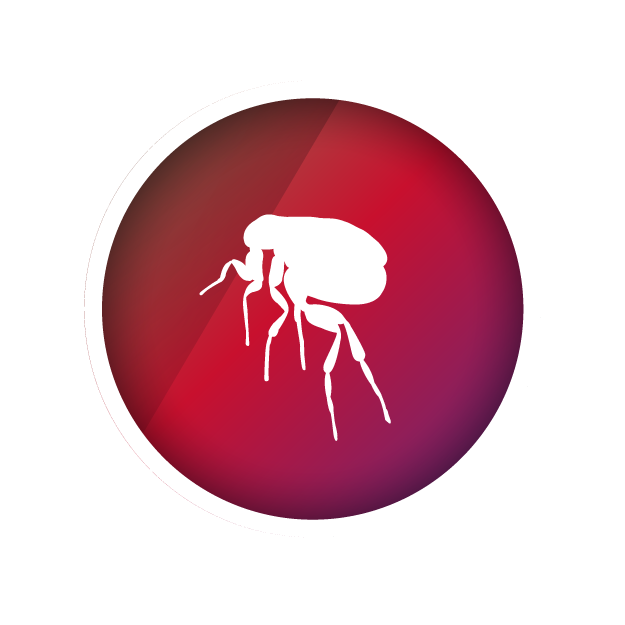
Life cycle of a flea
Click through all stages of the flea life cycle to learn more.
Eggs
Female fleas lay eggs whilst on your dog or cat and can produce 40-50 eggs a day leaving them to fall off your pet and all over your home.

LarvaE
Each egg can hatch into a larvae and live in carpets, fabrics and small crevices in your pet’s environment. They feed on adult flea faeces and organic material they find until they’re ready to develop into pupae.
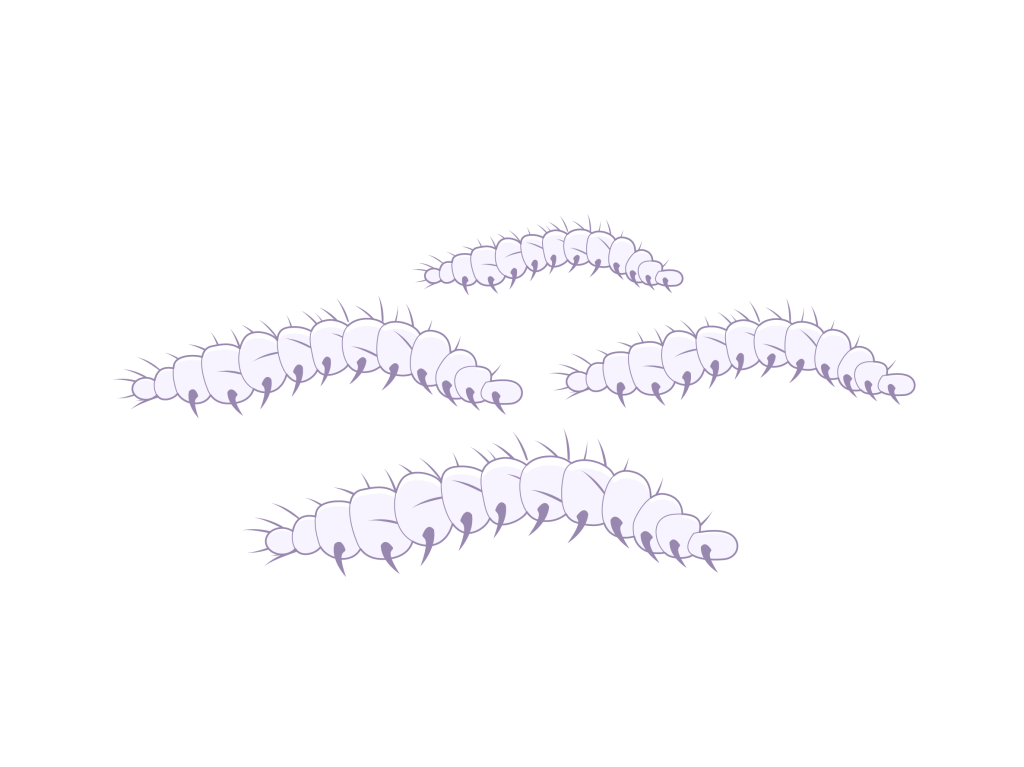
Pupae
Pupae develop into adult fleas inside tiny cocoons. Here they can stay dormant for long periods and come out in response to heat, carbon dioxide and movement.
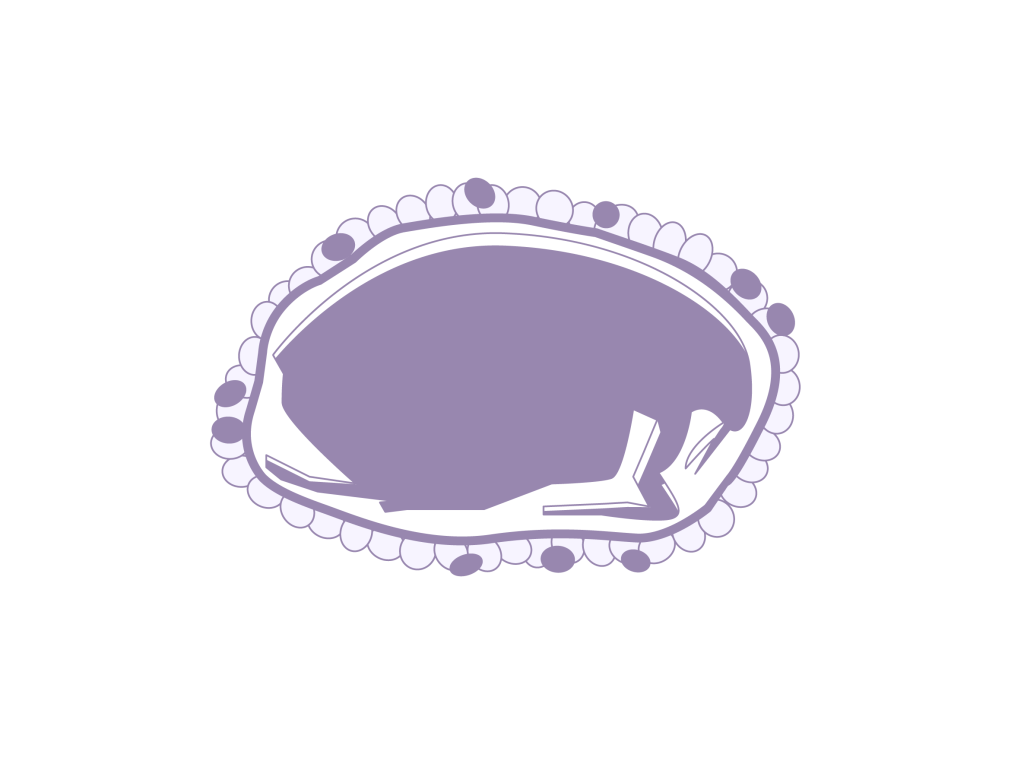
Adult
Once on your pet, adult fleas spend the rest of their lives there, feeding and laying eggs that infest your home within a matter of days.

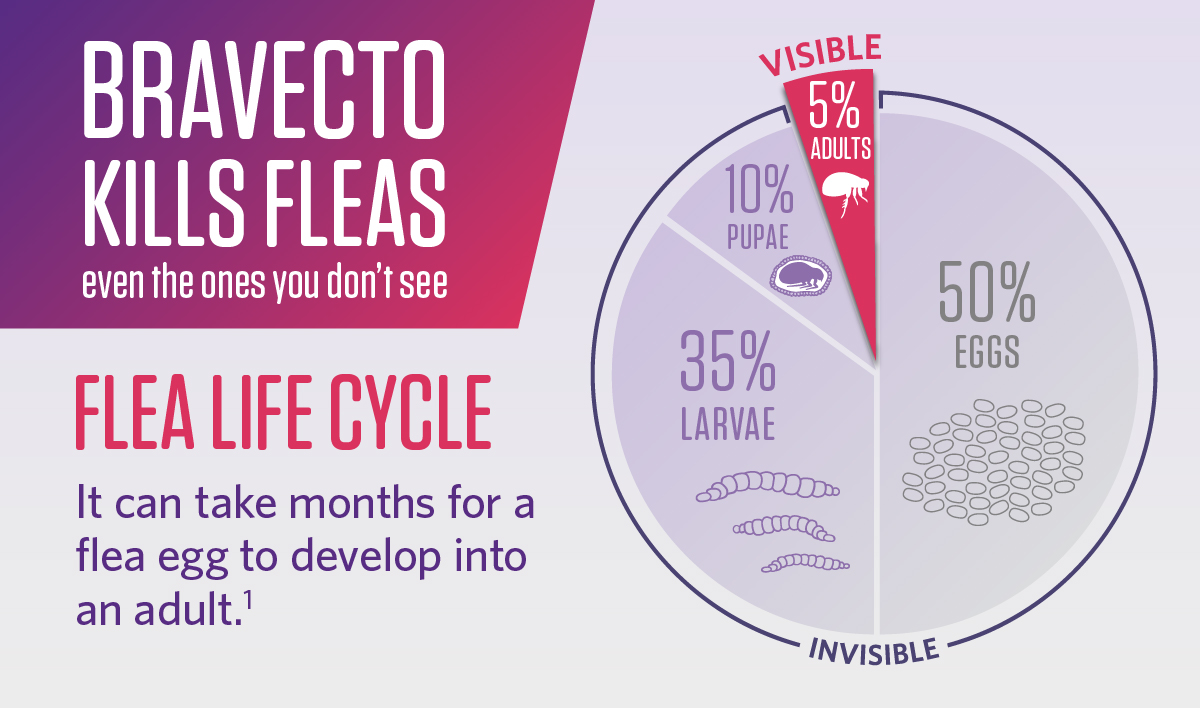
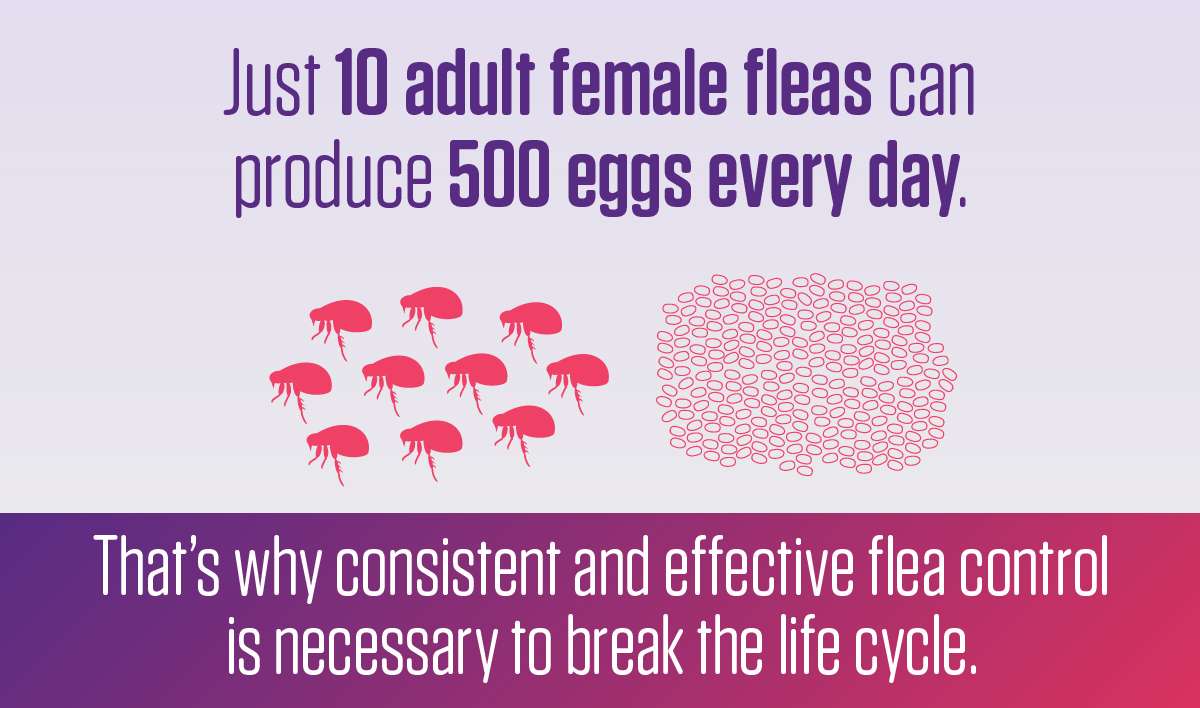
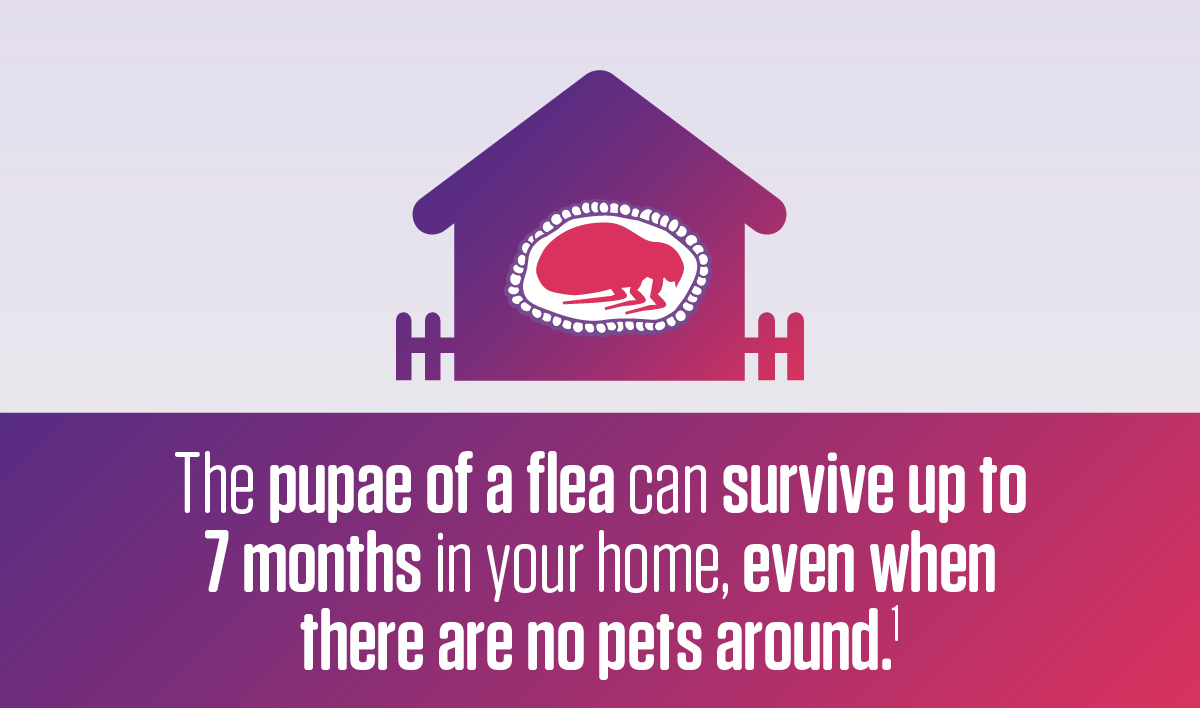
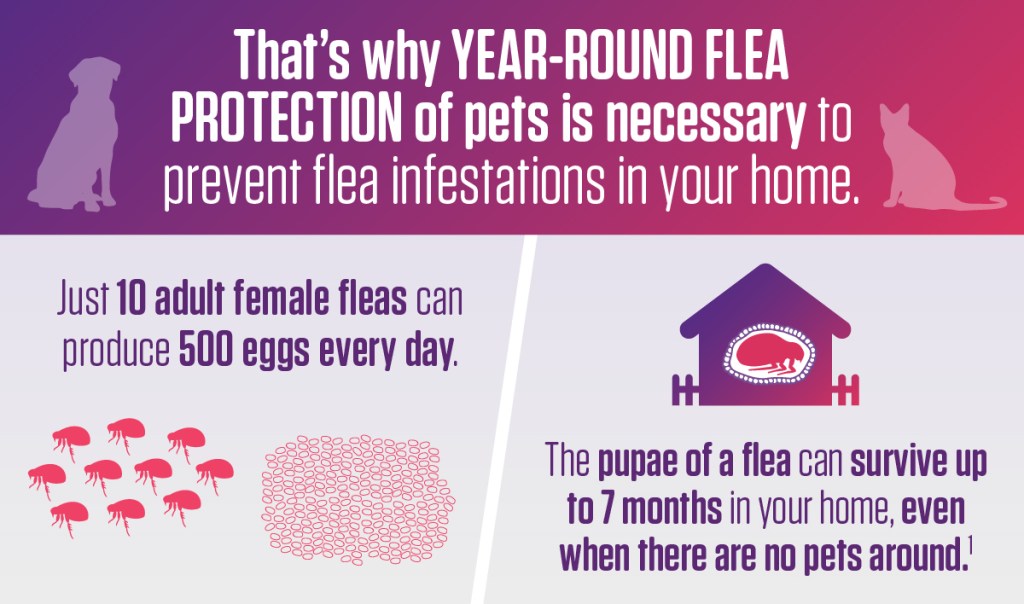


1. Rob Armstrong et al, FEAR THE FLEA ALL YEAR ROUND, Merck & Co., Inc., Rahway, NJ, USA and its affiliates, 2023.
2. Dryden M et al. In-home assessment of either topical fluralaner or topical selamectin for flea control in naturally infested cats in West Central Florida, USA. Parasites & Vectors. 2018;11:422. https://parasitesandvectors.biomedcentral.com/articles/10.1186/s13071-018-2995-1.
3. Williams H et al. Fluralaner, a novel isoxazoline, prevents flea (Ctenocephalides felis) reproduction in vitro and in a simulated home environment. Parasites & Vectors. 2014;7:275. https://parasitesandvectors.biomedcentral.com/articles/10.1186/1756-3305-7-275.
4. Dryden M et al. Efficacy of fluralaner flavored chews (BRAVECTO®) administered to dogs against the adult cat flea, Ctenocephalides felis felis and egg production. Parasites & Vectors. 2015;8:364. https://parasitesandvectors.biomedcentral.com/articles/10.1186/s13071-015-0965-4.
5. Dryden M et al. Evaluation of fluralaner and afoxolaner treatments to control flea populations, reduce pruritus and minimize dermatologic lesions in naturally infested dogs in private residences in west central Florida USA. Parasites & Vectors. 2016;9:365.
BRAVECTO QUANTUM requires vet authorisation, ACVM no: A011993. Bravecto ACVM No’s: A011019, A011261 & A011446.



